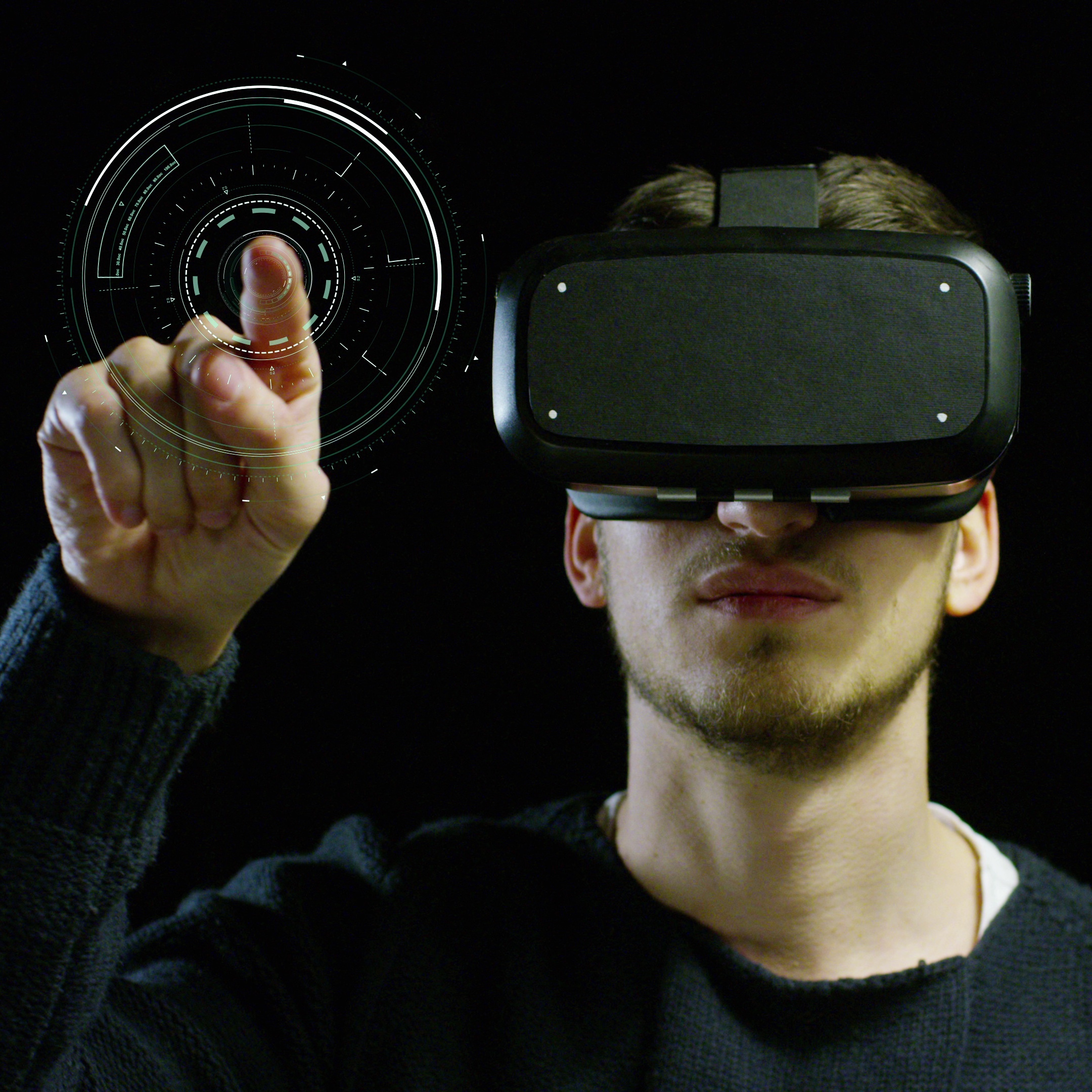Haptic technology — an introduction for marketers
We consider it our mission to break down and contextualize the latest tech that can make marketing and branding experiences more powerful, memorable, and impactful. Today’s tech in focus is haptic technology.
So, what is haptic technology? Haptics refers to the sense of touch and the associated perception and manipulation of objects that result from any form of interaction involving touch. Haptic technology aims to recreate the sense of touch via a device (haptic device) that serves as an interface between a user and a computer system and creates experiences using vibrations, motions, and other forces.
Why should a brand care about understanding haptic tech? Haptic technology is a critical part of immersive reality. As the landscape of marketing and advertising continually evolves, what’s effective today may not hold the same power tomorrow. In this dynamic environment, brands are turning to immersive experiences as a fresh avenue to forge meaningful connections with their audiences.
The demand for the tech is already galloping. Haptic technology boasted a market size of USD 3.9 billion in 2022, which is expected to grow to USD 5 billion by 2028 — although, to be fair, Haptics have uses far beyond marketing. Modern medicine has experienced an early avatar of haptic tech as part of medical examinations: Haptic technology enables the interactions between a clinician and the human body during medical examinations and surgical procedures that utilize endoscopes, for example.
In this blog, we’ll develop an understanding of haptic technology and its capabilities by looking at its uses and applications across sectors and discussing its relevance for businesses and marketers.
Before we dive in, let’s acquaint ourselves with the terminology around Haptics and haptic technology. Haptics are also known as 3D touch or kinaesthetic communication. Related terminology includes haptic technology and haptic feedback. Haptic technology, as the name suggests, refers to tech that simulates what an experience would feel like. Haptic feedback refers to the methods in which haptic technology communicates tactile information to users. Haptics is an umbrella term that describes the science of haptic feedback and haptic technology, in addition to neuroscience and physiology of touch.
Applications of haptic technology today
- 1. Mobile Phones
You’ve had haptic tech in the palm of your hand the whole time and didn’t even know it! Haptic tech is at play when your phone responds to your touch by vibrating, however subtly, in response. This is known as surface haptics.
- 2. Gaming
Haptics are becoming an increasingly vital component of VR-based gaming. The tech allows players to immerse themselves in the game using haptic suits and gloves (more on this later in this blog). Existing gaming tech is also incorporating Haptics into game controllers. For example, the Sony PlayStation 5 DualSense controllers allow users to feel wind and sand during a sandstorm. PlayStation describes it like this: “Feel physically responsive feedback to your in-game actions with dual actuators which replace traditional rumble motors. In your hands, these dynamic vibrations can simulate the feeling of everything from environments to the recoil of different weapons.”
- 3. Automobiles
Haptic technology is part of our everyday lives, not just on our phones but also in our cars. As touchscreen panels become increasingly ubiquitous, there would have been the correspondingly increasing dangers associated with drivers taking their eyes off the road. But thanks to haptic technology, commands are validated by tactile feedback (much like our phones), allowing drivers to get command confirmation without needing to look at the dashboard screen.
In the coming years, we might even see haptic technology extend to steering wheels and seats, alerting drivers to possible collisions with other vehicles and even people or animals crossing the street.
- 4. Marketing and branding
Haptics can be applied to several areas of marketing and branding. A Harvard Business Review article foretold haptic tech’s role back in 2015 when it claimed, “We’re about to enter an era in which many more consumer products companies will take advantage of sense-based marketing.” It might have taken a little longer to make than the article had predicted, but with immersive marketing becoming more prevalent, the stage is set for haptic tech.
For example, a RetailDive study found that “56% of shoppers say they visit stores — at least occasionally — to first see, touch and feel products before buying them online. Roughly a third make this practice habit, reporting that they always or frequently go to stores to see or try out items before buying on the web.” The study also found that 10% of buyers make it a habit to touch and feel items in a store before making an online purchase.
In addition, integrating tactile sensations into your product promotion holds the promise of forging fresh and captivating avenues for crafting unforgettable promotional experiences. Think of product demonstrations made more realistic with haptic feedback. Or brand museums that can simulate factories and production processes that drive precision and perfection in finished products. There’s also room for Haptics in destination marketing: Imagine being able to test Westin’s Heavenly Bed or experience what a hot air balloon ride over Capadocia would feel like before ever making a booking.
Businesses can also incorporate haptic technology into training environments and replicate real-world work settings and labor conditions in a risk-free setting. Leveraging haptic feedback, executive briefing centres and simulator training can become far more robust. You can train for a variety of real-world scenarios: maintenance tasks, safety protocols, assembly line operations, machinery handling, and product testing.
- 6. Healthcare:
With haptic technology, surgeons might be able to perform some surgeries and examinations and undergo training utilizing far less invasive methods. For example, the Digital Rectal Examination Haptics Training System, branded as Direct, uses haptic technology to help healthcare professionals learn how to perform rectal examinations. The technology provides an authentic haptic interface along with simulation software that replicates the tactile sensations and interactions involved in conducting a DRE (Digital Rectal Examination) on a patient. It also offers feedback on the examination technique in real-time.
Another tech known as a Virtual Catheterization Simulator, branded as VCSim, enables minimally invasive cardiovascular interventions. These surgeries are performed by inserting long, thin, flexible surgical instruments (catheters and guidewires) through a patient’s femoral artery near the groin all the way to the heart. The haptic device accurately monitors the movement of the catheter and guidewire, enabling translation and rotation. Additionally, it delivers force feedback to replicate the interactions between the tools and the vasculature.
Haptic technology has also contributed to telepresence surgery becoming a reality, allowing expert surgeons to operate on patients from a distance. Surgeons can operate on patients remotely. During the procedure, the surgeon experiences tactile sensations and resistance feedback akin to operating directly on the patient.
- 7. Music and entertainment
Haptic technology allows musicians to literally feel the beat. A Swedish synthesizer brand called Teenage Engineering introduced Haptics into one of their synthesizers, allowing musicians to feel bass frequencies directly on their instrument.
Haptic tech in the market
BHaptics, developer of the Tactusit 40, the Tactsuit 16, and TactGloves DK1, offers developers the option to add Haptics to experiences by integrating their bHaptics SDK. According to their website, the SDK “comes with a vast library of over 500 haptics patterns, from a soft breeze to powerful gunshots and explosions.” They also offer a tool—bHaptics Designer, that allows app and experience designers to create and customize their haptic patterns by clicking feedback points or drawing paths. They claim that this allows for “seamless integration into a variety of content, including games, videos, and more.
Possible uses: Can be built into immersive experiences at brand museums, executive briefing centers, and training modules.
Haptx, famous for their Haptx Gloves G1, enable telerobotics or what they call “haptic control of robot hands from anywhere”. According to their website, “HaptX Gloves can be used to control robotic hands, grippers, and arms, enabling the operator to control robots from any distance and feel what the robot feels. This enables continuous natural interaction and provides critical touch information to the operator.
Possible uses: Can be used for remotely exploring products or locations.
Haptx has two other haptic tech products: Shadow Dexterous Hands and SynTouch BioTac. Shadow Dexterous Hands mimic human hand dexterity, replicating the movements and position of the human operator’s hand. Meanwhile, SynTouch BioTac’s sensors capture tactile information and transmit haptic feedback data back to the operator’s hand with high accuracy and low latency.
Possible uses: It can be used for remotely exploring products or locations and for training.
Conclusion
As the global user base grows, haptic tech will continue to expand its appeal across sectors and use cases. For us in the branding and marketing space, it’s easy to imagine Haptics coming into use for product demonstrations and product trials in the way that you can sample watches or sunglasses on your wrist and face, respectively, on several websites today.
Moreover, haptic tech is already fairly accessible from a pricing standpoint. Although Haptx’s gloves cost over USD 5,000, BHaptics’s products are comparatively more affordable, costing between USD 300 and USD 600. This means that brands can afford to include these in brand experiences with the expertise of immersive experience design experts.
So, are you ready to bring a touch and feel experience of your brand and product line-up to the table?



